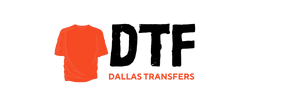Dallas DTF Gangsheet is more than just a print file—it’s a strategic tool for marketers who want to scale campaigns without sacrificing quality. This approach packs multiple designs onto a single production sheet, emphasizing how DTF sheet layout can boost efficiency while maintaining print integrity. By consolidating artwork for tees, hoodies, and more, brands can test concepts quickly and reduce setup time across orders. Adopting this method also aligns with broader DTF marketing strategies, helping teams manage calendars, budgets, and performance data in one streamlined workflow. With clear planning and real-world testing, this approach becomes a practical backbone for fast, cost-conscious campaigns that still look sharp.
Put simply, the concept translates to a grouped print run for Direct-to-Film that bundles several designs on one sheet to maximize production time and minimize waste. Instead of thinking in single-design orders, marketers can plan a consolidated sheet that aligns artwork with garment types and print areas, a practice that echoes the core ideas of the gangsheet approach without naming it directly. This multi-design transfer sheet supports rapid testing of colors, placements, and messaging while keeping color management and alignment manageable. In other words, it’s a scalable workflow principle for brands pursuing faster turnarounds and more precise market feedback.
1. What is a Dallas DTF Gangsheet?
A Dallas DTF Gangsheet is a single print run that houses multiple designs on one film, designed to streamline production in Direct-to-Film (DTF) printing. In practice, this approach bundles each design with its color and size variations so you can transfer them to numerous garments in one pass. While the term often references a Dallas-area workflow, the concept applies to any geography and marketing operation that wants to maximize efficiency without compromising quality.
For marketers, the Dallas DTF Gangsheet represents more than a file—it’s a strategic tool that helps accelerate campaigns. By consolidating designs on a single sheet, you can test several concepts quickly, tighten lead times, and maintain consistency across orders. The result is faster turnarounds, clearer creative testing, and a more predictable production lifecycle—from artwork handoff to the finished product.
2. DTF gangsheet explained: From artwork to transfer
DTF gangsheet explained centers on a practical workflow where several designs are arranged on one sheet, then printed, coated with adhesive powder, and transferred to fabrics. This bundling boosts throughput and reduces setup steps, which lowers per-unit costs and makes it easier to manage small-batch production. The concept remains the same whether you’re in Dallas or elsewhere; the value comes from optimizing the print run as a cohesive unit.
From a marketer’s lens, the explanation highlights color separations, spacing, and alignment considerations that ensure each design transfers cleanly. While the approach can introduce color management challenges, the payoff is tangible: rapid prototyping, scalable testing, and smoother fulfillment. With a well-executed DTF gangsheet, teams can learn what resonates with audiences without rerunning multiple, expensive single-design jobs.
3. The benefits of gangsheet printing for campaigns
Gangsheet printing benefits include faster onboarding for campaigns, reduced setup time, and lower material waste. By consolidating several designs on one sheet, teams can launch time-sensitive promotions more quickly and test multiple concepts in a single production cycle. This efficiency is especially valuable for seasonal drops and regional campaigns where speed and adaptability matter.
Beyond speed, gangsheet printing supports cost efficiency, scale, and better brand control. Bundling designs helps optimize per-unit costs and enables robust A/B testing or limited releases without inflating the budget. It also promotes consistency in color and placement across orders, helping preserve a cohesive brand look across different garments and sizes.
4. DTF sheet layout: planning for efficiency and accuracy
A well-structured DTF sheet layout is the blueprint for successful gangsheet production. It defines how many designs fit on a sheet, where each design sits on the film, and how color channels are organized for consistent transfers. The goal is to minimize waste, reduce rework, and speed up the handoff from artwork to production.
For marketers, a strong sheet layout means clearer separation between designs, consistent margins, and a workflow that aligns with the production queue. Early collaboration with design and print teams is essential to specify garment types, sizes, and placement areas, so the sheet can be optimized for the actual run. The result is less guesswork and more predictable outcomes for campaign performance.
5. Integrating Dallas DTF Gangsheet with DTF marketing strategies
To integrate a Dallas DTF Gangsheet with DTF marketing strategies, start by defining campaign goals and the questions you want the sheet to answer—such as color performance, messaging resonance, or design popularity. Then select a diverse mix of designs to maximize learning per sheet and plan for sizes, placements, and fabric types. Align color management resources and establish a feedback loop that ties production results to marketing metrics.
This approach supports broader DTF marketing strategies by emphasizing speed, customization, and data-driven decisions. By linking sheet outcomes to sales data, engagement, and return rates, teams can refine future gangsheet runs and scale successful designs. The result is a repeatable framework that blends creativity with measurable performance across product launches and seasonal lineups.
6. Case examples and common pitfalls in Dallas DTF Gangsheet campaigns
Consider a Dallas-based fashion brand launching a summer line using a Dallas DTF Gangsheet. The team features five designs across multiple sizes on one sheet to test colorways and messaging. The data gathered from sales and engagement informs which designs move into higher production quantities for upcoming launches, demonstrating the practical benefits of gangsheet workflows in real campaigns.
Common pitfalls include poor sheet layout that wastes space or leads to misregistration, inaccurate color expectations, overly complex designs that don’t transfer well, and underestimation of post-processing timelines. Solutions involve validating layout with a small test sheet, establishing color swatches and proofs, simplifying designs as needed, and building buffers into production schedules to align with marketing calendars.
Frequently Asked Questions
What is a Dallas DTF Gangsheet and how does it fit into Dallas DTF printing?
A Dallas DTF Gangsheet is a single print run that places multiple designs on one film, reducing setup time and material waste in DTF printing. In a Dallas DTF printing workflow, it bundles designs for testing and fulfillment, with a careful DTF sheet layout to keep colors aligned.
How can the Dallas DTF Gangsheet speed up campaigns and time to market?
By consolidating designs, it reduces setup steps and speeds up launch times, fitting into DTF marketing strategies that favor fast testing and rapid fulfillment while preserving quality.
What are the key benefits of gangsheet printing for marketers?
Key benefits include faster speed to market, lower per-unit costs, scalable creative testing, and improved consistency across designs and prints.
How should I design a DTF sheet layout for a Dallas DTF Gangsheet to maximize efficiency?
Create a DTF sheet layout with clear separation between designs, consistent margins, and appropriate bleed. Map designs to target garment placements and coordinate with design and print teams early to streamline production in the Dallas DTF Gangsheet workflow.
How do you manage color and placements when using a Dallas DTF Gangsheet?
Use color profiles, proofs, and swatches to manage color across designs. The DTF gangsheet explained approach emphasizes careful color separations and precise placements to preserve brand visuals in Dallas DTF printing.
What common pitfalls should be avoided with a Dallas DTF Gangsheet?
Avoid misregistration from poor sheet layout, color drift due to inconsistent proofs, overly complex designs that don’t transfer well, and underestimating post-processing timelines. Plan layouts, set color standards, simplify designs when needed, and add schedule buffers to minimize risk.
| Topic | Key Points |
|---|---|
| What is a Dallas DTF Gangsheet? | A gangsheet is a single print run containing multiple designs on one film; in DTF, it reduces setup time, material waste, and enables cost-effective small-batch production. The Dallas DTF Gangsheet adapts this approach to Dallas-focused workflows, but the concept applies broadly. |
| Why marketers should care | Speed to market; Cost efficiency; Creative testing at scale; Consistency and brand control. |
| DTF sheet layout: planning for efficiency | Plan layouts to maximize space and color separation; ensure clear separation between designs; maintain consistent margins and safe zones; align with garment sizes; collaborate early with design/print teams to optimize production. |
| How to use for campaigns | Define goals; select diverse designs; plan garment types/sizes/placements; specify color profiles; build a feedback loop using sales/engagement data to refine future runs. |
| Case examples | Examples: five-design gangsheet for a summer line; test colorways and messaging; use data to decide which designs scale into higher production. |
| Common pitfalls and how to avoid them | Poor layout leading to waste or misregistration; inaccurate color expectations; overly complex designs; underestimating post-processing timelines. Solutions: finalize precise layout, establish color swatches, simplify designs, and build production buffers. |
Summary
Dallas DTF Gangsheet represents a marketer-friendly approach to modern print production, combining multiple designs on a single sheet to unlock faster time-to-market, lower costs, and richer testing opportunities. When integrated with careful sheet layout, color management, and production planning, it helps brands scale campaigns while maintaining quality and consistent branding. For Dallas-area brands and beyond, embracing this workflow can shorten launch cycles, improve decision-making through data, and deliver on-trend apparel with better margins.

